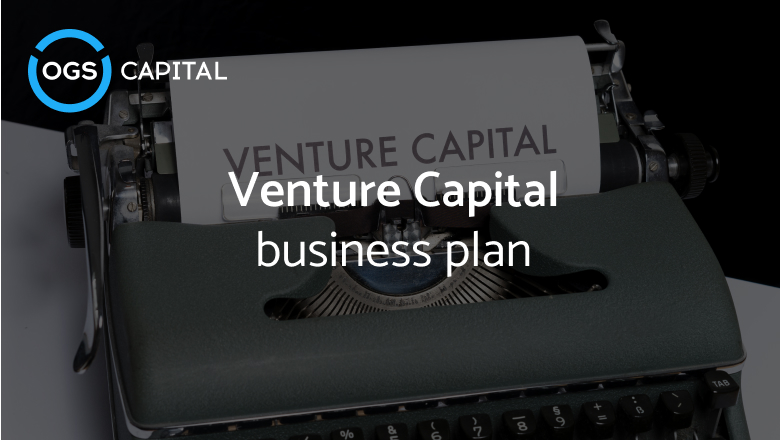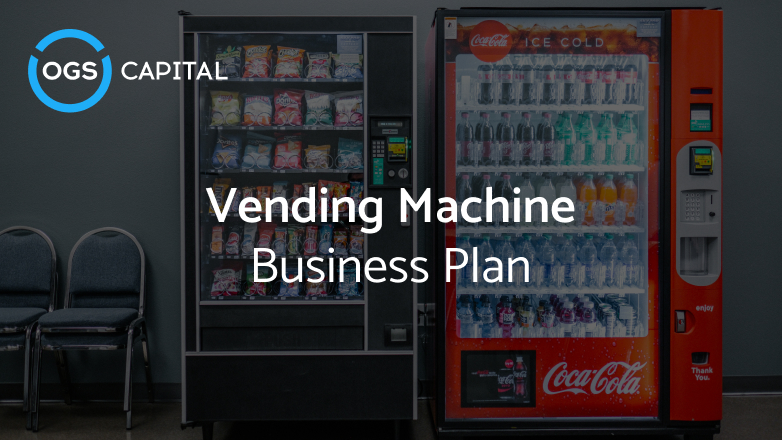Table of Content
Are you looking for VC funding or funding from other potential investors? You need a good business idea – and an excellent business plan. Business planning and raising capital go hand-in-hand. An investor business plan is required to attract a venture capital firm. And the desire to raise capital (whether from an individual “angel” investor or a venture capitalist) is often the key motivator in business planning.
What is a venture capitalist?
A venture capitalist, often referred to as a VC, strategically allocates financial capital to early-stage, high-potential startup companies to foster exponential growth and catalyze groundbreaking innovation. By leveraging their investments, venture capitalists secure partial ownership and wield a profound influence over critical strategic decisions and operational facets. Furthermore, they impart invaluable guidance and mentorship and harness their extensive network of influential contacts and abundant resources.
Venture capitalists aim to attain considerable returns on their investments through the strategic divestment of their ownership stake in the company at a subsequent stage, commonly facilitated through an IPO or a trade sale, encompassing mergers or acquisitions. Given the inherent risks associated with their investment endeavors, venture capitalists adopt an exceptionally discerning approach, meticulously selecting a mere fraction of the myriad companies that seek their sought-after financial backing.
Their active pursuit centers around identifying enterprises that epitomize disruptive technologies or trailblazing business models, thrive within expansive and rapidly evolving markets, exhibit a significant competitive edge, and are steered by an adept and fervent management team. These are the essential elements of a compelling Business Plan for Investors that can attract the attention and support of venture capitalists.
What is a Venture Capital Firm?
Venture capital firms (VCs) are money companies that put money in and help new and scalable startups. VCs get funds from different investors and then give them to startups they think can change or make new markets. VCs use a team of experts who check the chance of new companies. These experts have different backgrounds and skills in different businesses, and they use their ideas to help VCs pick companies that are likely to do well.
Besides giving money, VCs also give their companies other benefits, such as advice and access to their network of people, which can be very important to early-stage companies.
Types of Venture Capital Investments
Venture capital investments can be classified into different types based on the company’s development stage. The main types are:
1. Seed Capital
Seed capital is the earliest funding given to an innovator or group with a vision for a novel product or service but has yet to transform it into a feasible business. Seed capital is typically used for market exploration, product creation, prototype evaluation, customer verification, etc. Seed capital is very precarious because there is no assurance that the vision will work or that there will be a market appetite for it. However, seed capital can also generate very high rewards if the vision becomes successful and attracts more funding.

2. Startup Capital
Startup capital is the funding given to a company that has created its product or service and has introduced it in the market but has yet to generate substantial revenue or profit. Startup capital is typically used for promotion, sales, distribution, customer acquisition, etc. Startup capital is less precarious than seed capital because there is some indication of product-market fit and traction. However, startup capital can also be challenging to obtain because there is still uncertainty about the scalability and sustainability of the business model.
3. Early Stage Capital
Early-stage capital is the funding granted to a company that has validated its product or service in the market and has begun generating revenue and profit but has yet to attain its full potential. Early-stage capital is typically used to diversify the product or service portfolio, penetrate new segments, recruit more talent, optimize operations, etc. Early-stage capital is less precarious than startup capital because there is more evidence and traction of the business. However, early-stage capital can also be challenging and demanding because there are more expectations and pressure from the investors.
4. Expansion Capital
Expansion capital is the funding given to a company that has attained a significant market presence, revenue, and profit growth and is ready to scale up its business to the next level. Expansion capital is usually used to acquire other entities, develop new products or services, open new outlets, increase production capability, etc. Expansion capital is less perilous than early-stage capital because the business has more stability and predictability. However, expansion capital can also be costly and dilutive because more investors are engaged, and more equity is surrendered.
5. Late Stage Capital
Late-stage capital is the funding bestowed to a company that has reached a mature stage of development and growth and is preparing for an exit event such as an IPO or a trade sale. Late-stage capital is usually used to enhance the company’s valuation, reputation, and visibility, improve financial performance, strengthen governance, etc. Late-stage capital is less perilous than expansion capital because there is more certainty and credibility in the business. However, late-stage capital can also be complex and restrictive because more regulations and obligations are involved. However, a SBA Business Plan can help late-stage companies comply with the requirements and expectations of investors.
6. Bridge Financing
Bridge financing is the interim funding granted to a company that requires short-term capital to fill an urgent need or gap until it obtains a lasting or stable source of financing. Bridge financing is typically utilized for satisfying payroll, settling bills, accomplishing a project, etc. Bridge financing is perilous because there is no assurance that the firm can secure lasting or stable financing. However, bridge financing can also be beneficial and adaptable because it can offer swift and effortless access to cash.
The following table compares the different types of venture capital investments based on their stage, amount, risk, return, and purpose:
| Type | Stage | Risk | Return | Purpose | Pros | Cons |
| Seed Capital | Idea | Very High | Very High | Validate Idea |
|
|
| Startup Capital | Launch | High | High | Validate Market |
|
|
| Early Stage Capital | Growth | Medium | Medium | Validate Business |
|
|
| Expansion Capital | Scale | Low | Low | Validate Potential |
|
|
| Late Stage Capital | Exit | Very Low | Very Low | Validate Valuation |
|
|
| Bridge Financing | Gap | Very High | Very High | Validate Survival |
|
|
Venture Capital and VC Funding Methods
Venture capital is a source of funding for entrepreneurs who need money to grow their businesses. VC funding methods are the terms and conditions venture capitalists agree on when investing in the companies they support. Different methods of making a venture capital deal exist based on the people involved, worth, chance, and choices. The main methods are:
1. Common stock
This is the most straightforward form of VC funding method. It involves issuing shares of common stock to investors in exchange for capital. A common stock gives the investors voting rights and dividends (if any) in proportion to their ownership stake. Common stock is usually preferred by early-stage companies with low valuation and high risk.
2. Preferred stock
This is a more complex and sophisticated form of VC funding method. It involves issuing shares of preferred stock to investors in exchange for capital. Preferred stock gives the investors preference over common stockholders regarding dividends, liquidation, and conversion rights. Preferred stock is usually preferred by later-stage companies that have higher valuations and lower risk.
3. Convertible debt
This is a mixed form of VC funding method. It means giving the investors a debt instrument that can be converted into shares later or when some conditions are satisfied. Convertible debt pays the investors interest and money back until it gets converted. Early companies with unclear worth and a high chance of failure often choose convertible debt.
4. SAFE (Simple Agreement for Future Equity)
This is a newer and simpler form of VC funding method. It means making a deal with the investors that lets them get shares in the future at a fixed worth or lower price. SAFE only involves issuing shares or debt instruments to the investors once a future financing event occurs. SAFE is usually preferred by seed-stage companies that have uncertain valuations and high risk.
Main Sections of a Venture Capital Business Plan
A venture business plan is a document describing your business idea, market opportunity, competitive advantage, financial projections, and funding needs. It is a tool that helps you communicate your vision and strategy to potential investors and partners. A venture business plan sample should include the following sections:
1. Executive Summary
The executive summary is pivotal in your venture business plan, serving as the primary section that demands attention. It aims to present a concise yet comprehensive overview of your business idea, target market, unique value proposition, traction and milestones, financial summary, and funding request. It is vital to draft the executive summary clearly and compellingly that captivates readers and incites their curiosity to explore your venture further.
2. Company Analysis
The company analysis section delves deeper into your company’s narrative, providing a detailed account of its history, mission, vision, values, goals, objectives, team, culture, and legal structure. This section highlights your company’s noteworthy achievements and inherent strengths while addressing the potential challenges and risks it faces. Moreover, it presents a compelling case for the qualifications and capabilities of your team, demonstrating their aptitude in executing the business plan.
3. Industry Analysis
The industry analysis section demonstrates your understanding of the market you operate in or plan to enter. It should provide relevant information about your industry’s size, growth, trends, drivers, challenges, opportunities, and outlook. It should also identify and analyze your industry’s key segments and sub-segments.
4. Customer Analysis
The customer analysis section is important as it outlines and describes your target market and various customer segments. It should encompass a detailed profile of your ideal customers, covering their demographics, psychographics, behaviors, needs, pains, desires, preferences, and purchasing patterns. Furthermore, this section should include an estimation of your product or service’s total addressable market (TAM), serviceable available market (SAM), and serviceable obtainable market (SOM).
5. Competitive Analysis
The competitive analysis section is crucial in identifying and evaluating direct and indirect competitors. It thoroughly assesses their strengths, weaknesses, strategies, products, services, prices, features, benefits, market share, customer satisfaction, and distinctive factors. Additionally, this section explains your market positioning strategy, emphasizing your competitive advantages and unique selling points.
6. Marketing Plan
The marketing plan section outlines your marketing strategy and tactics for reaching and attracting your target customers and generating sales and revenue. It should cover the following elements:
- Product and service
- Pricing
- Distribution
- Promotion
- Marketing process
- Marketing Physical Evidence
7. Operations Plan
The operations plan section describes how you will run and manage your business daily. It should cover the following aspects:
- Production
- Facilities
- Inventory
- Logistics
- Human Resources
- Legal issues and requirements
8. Financial Plan
The financial plan section provides a detailed projection of your financial performance and position for three to five years. It should include the following components:
- Income Statement
- Cash Flow Statement
- Balance Sheet
- Break-Even Analysis
- Funding Request
- Funding Sources
- Exit Strategy
OGSCapital for Your Venture Capital Business Plan
Are you looking for an answer to: How to write a venture capital business plan? Our business plan experts at OGSCapital can help. We have a team of professional business plan writers with over 15 years of experience offering business plan writing services. We have helped over 5,000 clients attract more than $2.7 billion in financing. Here are some of the reasons why you should choose OGSCapital for your venture capital business plan:
OGSCapital can provide you with the following benefits:
- A customized and high-quality business plan
- Comprehensive and in-depth market research and analysis
- A realistic and accurate financial model and projections
- A persuasive and compelling executive summary
- A professional and attractive design and layout of your business plan
- Fast and reliable delivery within 10 to 15 days
- A revision after receiving the first draft of your business plan
If you’re also confused about how to write a business plan for venture capital that stands out from the crowd and increases your chances of getting funded, contact our experts at OGSCapital today.
Frequently Asked Questions
1. What do venture capitalists look for in a business plan?
A business plan to raise venture capital should demonstrate a great business idea, a talented and experienced team, a unique and valuable product or service, a market validation, a huge and expanding market, and a good deal and exit strategy. Plus, it should be clear, concise, well-researched and realistic.
2. What is the golden rule for venture capitalists?
For venture capitalists, people matter more than ideas. They look for entrepreneurs and managers with passion, dedication, flexibility, and willingness to learn from feedback. Venture capitalists believe these are the essential qualities that make or break a venture.
Download Venture Capital Business Plan Sample in PDF
OGSCapital’s team has assisted thousands of entrepreneurs with top-rate business plan development, consultancy and analysis. They’ve helped thousands of SME owners secure more than $1.5 billion in funding, and they can do the same for you.



















